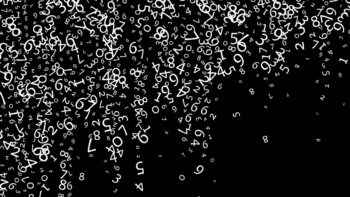Marcia Barbosa, who last year organized the first international conference on women in physics, examines what progress has been made since then to encourage women into the field

Women are greatly under-represented in physics. Of all the sciences, physics is the subject in which the increase in the number of women involved has been particularly slow. Many bright young people do not get the chance to learn about physics and to prepare themselves for a career in the field. Others are simply discouraged from studying physics altogether.
However, the problem is worse than that. Many of the women who do take physics end up running away from it. Statistics show that a higher proportion of women than men leave physics at each stage of their career – a phenomenon that is often dubbed the “leaky pipeline”.
But why should we care? After all, why should women do physics? The answer is that women who have a passion for the subject have the right to make a living from it and have a successful career in the field. What is more, science is changing and becoming more interdisciplinary, requiring a diversity of thought and strategies to solve different types of problems. By excluding female researchers, we are limiting the available pool of talented people to half of humanity and eliminating diversity. Physics needs women to survive.
Finally, in a society in which technology is increasingly governing our everyday life, exposing women to science leads to a more scientifically literate public.
In an attempt to tackle these problems, last year the International Union of Pure and Applied Physics (IUPAP) held the first ever international conference on women in physics (Physics World April 2002 p6). The meeting in Paris, organized by IUPAP’s women-in-physics group, brought together over 300 participants from 65 countries – about 15% of whom were men. Discussions focused on how to attract girls into physics, how to launch a successful career in physics, and how to improve the climate for women in scientific institutions. The meeting also looked at how to balance family and career, how to get more women into leadership positions, and how participation rates vary around the world.
Delegates returned home with two messages. The first was for women themselves – that networking can help them to overcome the isolation that they often feel as physicists. The second was addressed in the form of eight resolutions directed towards schools, universities, research institutes, industrial labs, professional societies, governments, granting agencies and IUPAP itself. The resolutions emphasized the importance of equity and transparency at all levels – from the way that physics is taught at school to the methods used to evaluated scientists throughout their careers.
Progress since Paris
Over a year on from the meeting, it is natural to ask what has been achieved since then? First, delegates at the conference are now part of a network of some 65 national – and sometimes continent-wide – working groups. In many of these countries, ranging from Albania to South Korea, the groups are an official part of their national physical societies (see Physics World June 2003 p41 for the response from the Institute of Physics). The European Physical Society, meanwhile, has set up a working group on gender and equality in physics, co-ordinated by Gillian Gehring from Sheffield University, who led the UK delegation at the Paris meeting. All of these teams are in contact with each other to publicize and advocate the resolutions, to monitor how they are implemented, and to evaluate their impact on the climate for women in physics internationally.
Links between women in physics are also growing beyond those who were at the Paris meeting. Groups of women in specific areas of physics, for example, are working together to build up strategies to overcome the barriers that they face. Indeed, the 22nd IUPAP International Statistical Physics Conference, which takes place in Bangalore next year, will have a session on women in physics, co-ordinated by Neelima Gupte, India’s team member at the Paris meeting. Various national physical societies – from Brazil to Norway – are also holding sessions on the topic at their conferences.
However, increasing awareness about the problem it is not enough. We also need action to ensure that women are evaluated with fairness and transparency at every stage of their careers. Everyone has a natural tendency to mix with and look for collaborators, co-workers and students who are like themselves. What this means in a male-dominated field like physics is that women receive less mentoring, have fewer role models, and are more likely to be excluded from the community.
Moreover, many practices that have nothing to do with the quality of the research – but do not appear as outright discrimination – can affect women’s careers in a damaging way. Examples include a lack of transparency in the hiring process and in the way staff are promoted, as well as double standards. For example, a character trait that may be viewed as a virtue in a man is often regarded in a negative light when displayed by a woman. A persistent man is seen as tough, while a persistent woman is seen as pushy.
Another problem is that many male scientists take a narrow view of “scientific excellence”, in which they place too much emphasis on aggressiveness and competitiveness. Women, in contrast, generally tend to examine a problem from all angles before making a statement on it. So rather than jumping into a debate during someone else’s talk, for example, a woman may prefer to discuss the matter privately with the speaker after the seminar is over. This, however, is usually seen as a sign of insecurity.
These are the major causes of the leaky pipeline that affects women in particular and excludes anyone who does not fit into the “tough boys’ club”. This situation is not only unfair for women but also dangerous because physics needs a diverse community of people.
Searching for solutions
So how can we address this problem? Changes in hiring and promotion practices are achieved faster when women take part in the decision-making process. With this in mind, the IUPAP women-in-physics group brought this issue to the union’s general assembly in Berlin last October.
IUPAP now recommends that its member physical societies should appoint women to the organization’s liaison committees, which represent these societies within IUPAP. It has also called for gender to be considered when nominations to its commissions and the council are made. Finally, IUPAP expects that women should be included on the programme committees of IUPAP-sponsored conferences.
Similar actions are being taken by IUPAP working groups in their individual countries. Women will as a result become more visible in the scientific community. Other female students and researchers – inspired by these new role models of the 21st century – will hopefully then be attracted to physics.
Unfortunately, transparency alone will not guarantee that women remain in physics research. Family matters are another issue that has to be addressed. Although having a family does not necessarily prevent women from carving out a successful scientific career, children do hinder a woman’s career more than they do for a man. Childcare is still largely the responsibility of women. Moreover, childhood usually coincides with the precious few years in which the roots of one’s career have to be laid down. Taken together, these two factors reduce the scientific productivity of women during their child-rearing period.
However, a recent study carried out by the Japanese delegation in Paris – reported by Masako Bando from Aichi University – shows that the scientific productivity of women after a child-rearing period greatly surpasses that of colleagues who are at the same stage in their careers. Even though this study is not conclusive, it does highlight the fact that the careers of men and women are different and should not be treated with equality – but with equity.
Institutions should therefore launch initiatives to allow scientists to choose flexible career paths. Funds should be provided to enable scientists – women and men alike – to return to work after a career break. In Taiwan, for example, the women-in-physics working group recently established the Wu-Chien-Hsiung scholarship, which offers annual grants of up to $600 per year to female graduate students. The group is now planning to ask the country’s national science council to extend the scheme to young women who have taken long-term maternity leave. Other countries’ working groups are also asking grant-awarding bodies to review their recruitment criteria and grant-funding mechanisms to ensure that women who have taken time off to have children are not put at a disadvantage.
Women face a more difficult situation in developing nations. Since science funding in these regions is often limited, the chance that a woman will have access to grants becomes even less. Acknowledging this, the IUPAP women-in-physics group – with the support of UNESCO’s regional bureau for science in Europe – last year launched a programme to help women from developing nations to attend scientific conferences. This programme is being renewed this year with the support of individual donations and the cosmetics giant L’Oréal, which we hope will become its permanent sponsor.
Women in Africa face the hardest situation of all. Very few women there become scientists because society expects them to bear the brunt of childcare and to look after elderly parents. The few active researchers who do exist have no funding, which prevents them from collaborating with other African scientists let alone participating in the international community. Recognizing that only a strong network of women in Africa will overcome this sense of isolation, the IUPAP working group on women in physics is now looking for funds to set up such a project.
A fair future
The first IUPAP international conference of women in physics is still very much a work in progress. By bringing together physicists from so many different countries and regions, it has become clear that the issues facing women in physics are complex and appear at many different scales. The only way to solve this highly nonlinear problem is to make sure that each branch of this growing network of women actively brings the issues of transparency and equity to light. Solutions to the problem will not only help women’s participation in physics, but will also ensure that all physicists – men and women alike – are treated fairly. Only then we will guarantee the survival of physics itself.



